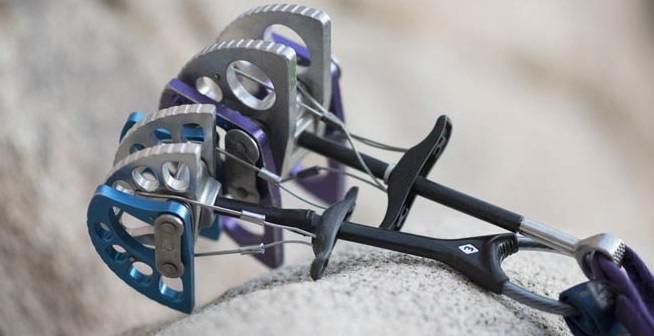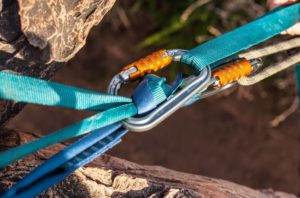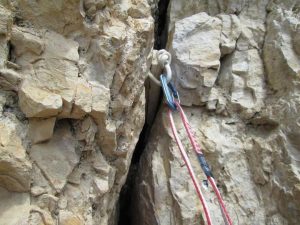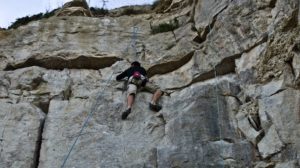Placing spring-loaded camming devices (SLCDs) or cams for protection while you’re rock climbing or creating anchors is one of the most important skills that you need to learn for safe traditional climbing adventures. If you don’t know how to place, evaluate, and remove cams, then you are going to have problems or be in an accident.
It’s your responsibility as a climber to learning as much as possible about your climbing equipment and how to use it safely. Follow the 10 tips below to learn more about placing safe and effective cams and then go out and practice cam placements before you climb.
1. Parallel-Sided Cracks are Best
Look for parallel-sided cracks for the best and strongest Cam placements. Flared cracks or cracks with one side wider than the other offer weaker placements for camming devices. Off-set camming devices work best in flared cracks including piton scars and shallow cracks.
2. Don’t Over-Cam the Unit
Pick the largest cam that will fit the crack. But don’t over-cam, leave it about 50% expanded. The stem should point in the direction of loading, usually downward. The optimal and strongest placement for camming units is within the middle range of the cam’s movements. If a unit is over-cammed or under-cammed, the placement is not only weak but, especially for over-cammed units, can be extremely difficult to remove.
3. Cams Can Walk
Camming units can “walk” or move and swivel in a crack, often farther into the crack, when the rope pulls upward as a climber leads a pitch. This recurring cycle of rope tension then release caused by rope drag increases the possibility that a cam will walk and that it will be difficult to remove or may migrate to a less secure placement.
4. Use Slings on Cams
Use an additional sling or quickdraw on a camming unit placed for protection while leading to reduce rope drag and lessen the possibility of the cam walking in the crack. The sling or quickdraw reduces the rotational effect of rope drag.
5. Avoid Cracks That Widen
Find cam placements where the crack doesn’t widen in front or behind the camming unit since movement and rotation could lead to failure, including walking out of the crack.
6. Don’t Use Only Cams for Anchors
Avoid using cams exclusively for top-roping anchors and anchor systems. The cycle of tension and release on the rope as a climber ascends and the rope pulls through the anchor can cause camming units to walk or creep into less secure placements in a crack. Instead, use other gear like nuts as well as natural anchors like trees as part of the top-rope anchor to minimize the danger of a cam walking into an insecure placement.
7. Use Flexible-Stem Cams in Horizontals
Use flexible-stem camming units in horizontal cracks instead of rigid-stem cams. Flexible-stem cams reduce leverage on the cam in cause of a fall or a load placed on the cam and are stronger than rigid-stem cams in this situation.
8. Stuck Cams Hard to Remove
Stuck cams can be very difficult to remove from cracks. Most climbers are reluctant to leave a camming unit fixed in a crack simply because of their expensive price tag. Most cams get stuck because they were overcammed and walked further back in a crack from the original placement by the rotational movement of the rope. It takes practice to become proficient at removing stuck cams. A nut tool is a big help.
9. Practice Placing and Removing Cams
Practice placing and removing camming units in cracks at the base of a cliff before you actually place them on a climbing route. Carry an assortment of cams and find the best placements for them. Use a sling to jerk on the placed unit to test its security. Ask a more experienced climber to analyze your placements and give you feedback. Also practice removing the cams so that you know the basics of removing stuck cams before you try high on a cliff.
10. Cam Placement Problems
It can be difficult to assess the security and integrity of a cam placement. Some of the common problems with cam placements are: the outside cams barely contact the rock surface, especially in flared cracks; the camming unit is too small for the crack, use a wider unit; and the cams are fully open or expanded, in which case, use a bigger unit.













